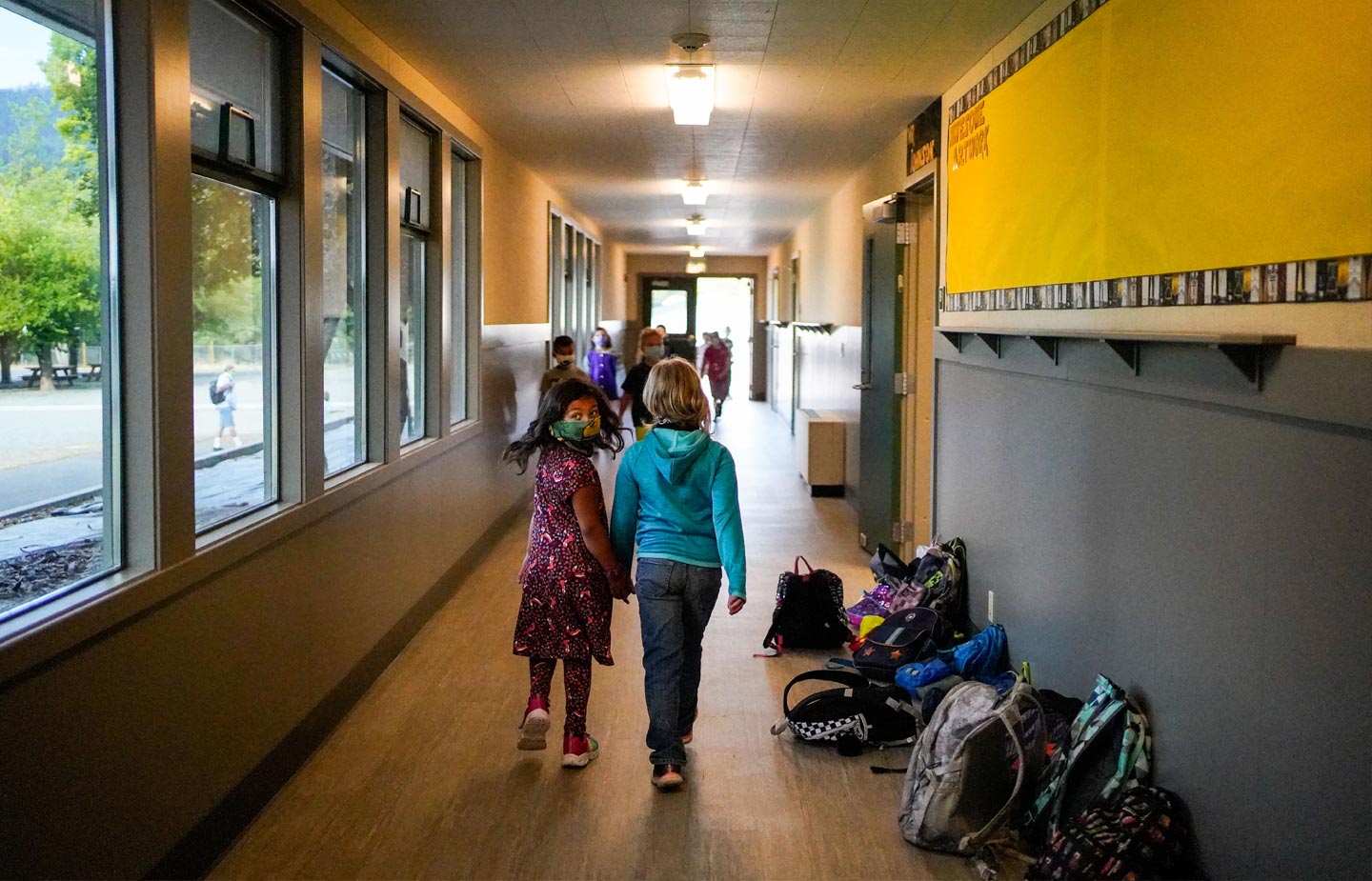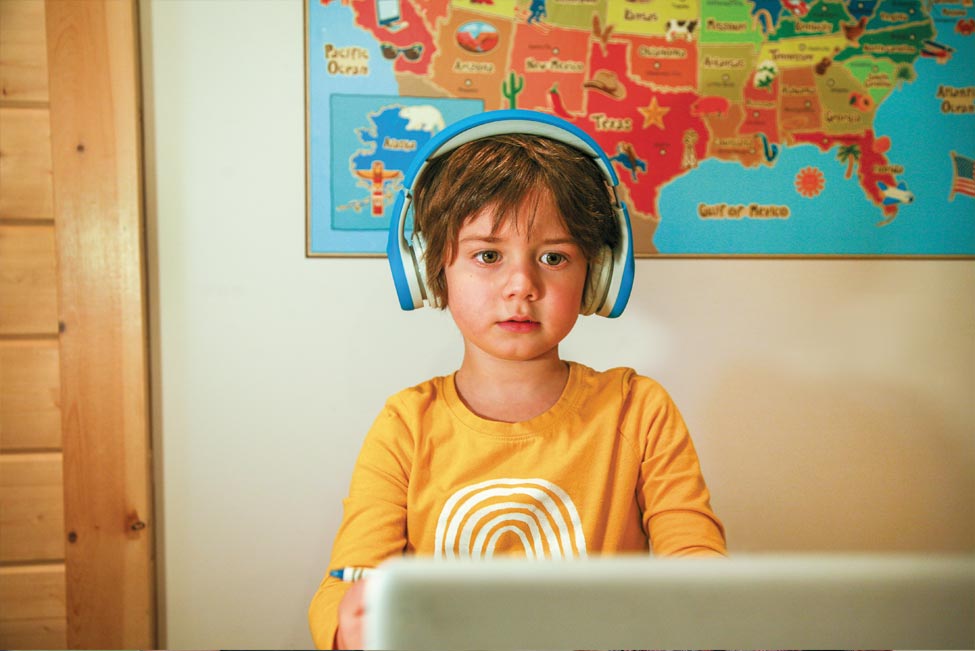Education Deferred
Primary- and secondary-school educators discuss the challenges of teaching during a pandemic.
My youngest daughter’s first day of kindergarten was just 13 minutes long. She sat in our dining room and watched a three-minute, prerecorded video of her teacher, whom she’d yet to meet, and completed a 10-minute activity on one of what seemed like countless apps she’d be required to learn.
We decided it didn’t really count. We didn’t take the customary first-day-of-school pictures until two days later, her first day of in-person school under our district’s hybrid system. She stood on the sidewalk against the backdrop of the empty playground, looking adorable—and utterly terrified. “Kindergarten?” asked the principal, whose kind smile was completely hidden behind her black face mask. I nodded, and she gently led Lila toward the school’s back entrance.
I waited until my little girl was completely out of sight before I burst into tears. I had cried a little when each of my older two had gone off to kindergarten. It’s a milestone, as all parents know. But this? This was different.
She did love her first day of in-person kindergarten. Wearing a mask all day wasn’t quite as bad as she’d thought it would be, and she made a few friends, although she didn’t remember any of their names.
On day five, her school’s vice principal was diagnosed with COVID-19. A few days later, the principal who helped Lila
into the building on the first day tested positive; so did a third staff member.
Just 10 days into the new school year, Lila’s school canceled all in-person classes.
DAVID HOWES ’93 M’00 will never forget March 13, 2020. In his more than two decades as an educator and school administrator, he had never experienced anything as disruptive as a sudden closure amid fears of a global pandemic.
“We just looked at each other and said, ‘We’ll be back in school in a couple of weeks.’ Then a couple of weeks became a month, and then another month, and then it became clear that we just weren’t going back,” said Howes, principal of two schools in the EASTCONN regional education organization, and a former principal and executive director at New London’s Interdistrict School for Arts and Communication.
Almost overnight, teachers had to completely rethink their approach to education and transition from live, hands-on, collaborative teaching models to a virtual model rife with technical difficulties and inequitable access.
“The mantra became ‘Do no harm,’ especially in terms of grades and attendance,” Howes said. “It wasn’t fair to punish kids because they didn’t have technology or internet access. The spring was really about just making it through.”
Lindsay Paiva ’12, a third-grade teacher at Webster Avenue Elementary School in Providence, Rhode Island, was given just one hour’s notice that her school was closing.
“We had barely enough time to get the kids their Chromebooks and get them home. After that, we were flying by the seat of our pants,” she said.
Paiva teaches students who are learning English as their second language, and many of them recently immigrated to the United States. The main challenge in March was to get internet access for families who couldn’t afford it, Paiva said.
“I was calling Cox Communications and yelling at them every day, trying to get the promised free service for my families. I had kids who were off the internet for eight weeks.”

